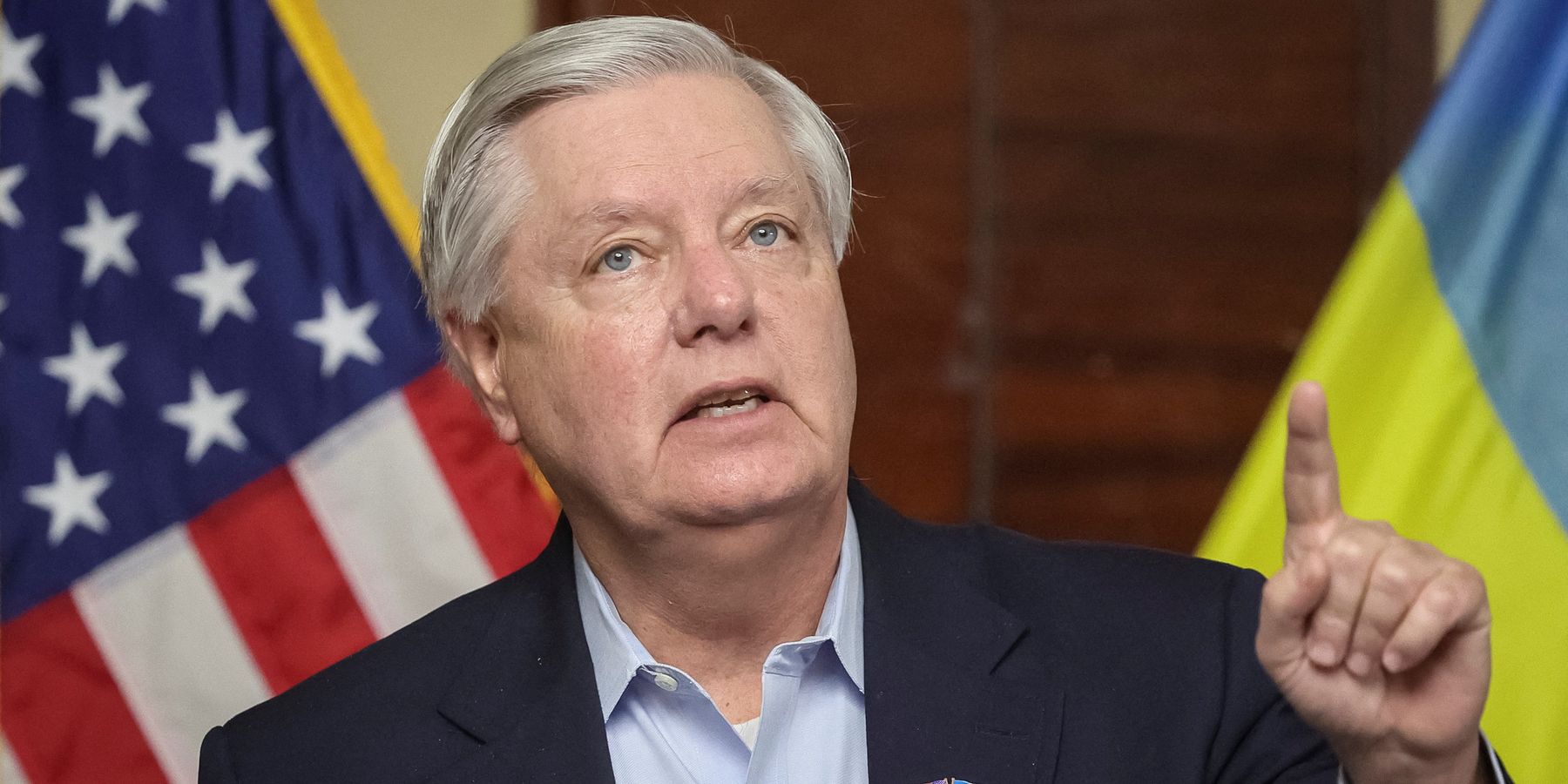Over 31,000 Ukrainian soldiers have died fighting Russia since the invasion, according to President Volodmyr Zelensky last month.
Never mind if that’s the actual number or not. For Lindsey Graham, it’s not enough.
Despite no evidence of victory on the horizon, the Republican senator is urging Ukrainian lawmakers to pass a mobilization bill that would force more Ukrainian citizens to be drafted into the military. Currently, men under 27 are exempted from the draft. Graham has a problem with that.
The Washington Post reports, “Ukraine’s new mobilization law, which has been under debate for months as the country faces a severe shortage of battle-ready troops, proposes lowering the country’s draft age to 25. Although citizens can voluntarily join the military starting at age 18, and men between 18 and 60 are banned from leaving the country under martial law, the draft has until now protected younger men — many of whom are students — from being forcibly mobilized.”
Graham told reporters, “I would hope that those eligible to serve in the Ukrainian military would join. I can’t believe it’s at 27. You’re in a fight for your life, so you should be serving — not at 25 or 27.”
“We need more people in the line,” he said.
How brave of Graham.
The New York Times reported in late January, “(A)fter nearly two years of bloody fighting, and with Ukraine once again in need of fresh troops to fend off a new Russian push, military leaders can no longer rely solely on enthusiasm. More men are avoiding military service, while calls to demobilize exhausted frontline soldiers have grown.”
“The change in mood has been particularly evident in the heated debates over a new mobilization bill that could lead to drafting up to 500,000 troops,” the Times noted. “The bill was introduced in Parliament last month — only to be quickly withdrawn for revision.”
It’s as if some Ukranians don’t want this bill. It’s almost as if many see no point in continuing to fight this war. But don’t tell Graham that. “No matter what we do, you should be fighting,” the Republican, who has zero skin in the game, insisted. “No matter what we do, you’re fighting for you.”
The Times continued, “The bill has catalyzed discontent in Ukrainian society about the army recruitment process, which has been denounced as riddled with corruption and increasingly aggressive. Many lawmakers have said that some of its provisions, like barring draft dodgers from buying real estate, could violate human rights.”
Graham didn’t address any of that. Paying attention to human rights violations is not exactly at the top of his to-do list. For the hawkish senator this is all about politics and ideology, which usually come first before all else.
So it shouldn’t be surprising that despite encouraging Ukraine’s young men to fight in a war many of them don’t believe in and don’t want to die in, Graham actually voted against the last Ukraine aid package because it did not include funding for U.S. border security.
So he was comfortable withholding money for a war over politics — a war he proclaims to believe in deeply — while urging citizens of a foreign country to march into oblivion.
When Graham was calling for U.S. military strikes on Iran in 2019, something Donald Trump refused to do at the time, the president rebuked the senator by telling reporters, “Ask Lindsey how did going into the Middle East, how did that work out? And how did going into Iraq work out?”
These are questions Graham would never ask. They are anathema to who he is and what he stands for. Risk assessment would just cloud the agenda. For Graham, engaging in all wars to achieve ideological and political goals is always the right decision despite the results, reality or tragic cost of the conflict.
Especially for the citizens of other countries.
- White House to Congress: Foreign weapons funding is all about US jobs ›
- Ukraine's tragedies: A 'good deal' for some war supporters ›
- Gleeful Graham: Ukraine War all 'about money' | Responsible Statecraft ›
- US may push but Ukrainians balk at lowering draft age to 18 | Responsible Statecraft ›
- Lindsey Graham just won't give up the Ukraine-NATO ghost | Responsible Statecraft ›
- Ukraine's 'Busification' — forced conscription — is tip of the iceberg | Responsible Statecraft ›
















